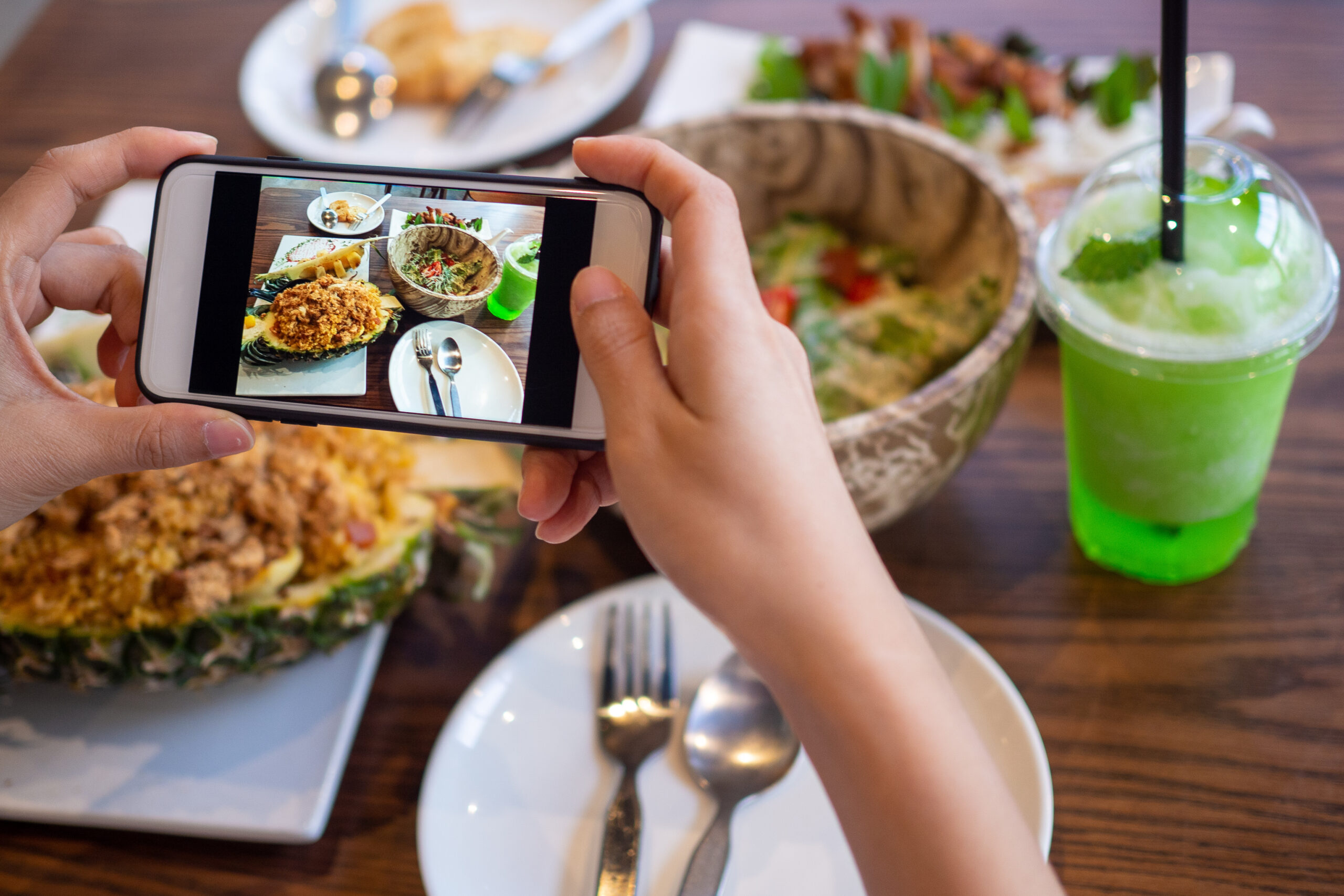In past blogs we’ve discussed how color and typeface/font can be used to create websites that successfully communicate your brand and inspire viewers to the action that you desire, such as making a purchase. In addition to color and typestyle, there’s something else that we must always keep in mind when designing websites: People love to look at photos! Think about your own behavior when interacting with social media. As you scroll down your Facebook or Instagram news feed, what grabs your attention more: posts with photos or posts that are text only?
Photos draw us in. They make us curious and hungry for more information. In short, they make us want to read the text that accompanies them. And people tend to remember information that is tied to a photo rather than information that is only presented in text format. Photos also provide a more personal connection with the person or company that is posting the photos. They allow you to “see” the person or the company and become familiar with them. Familiarity breeds comfort and loyalty. And in the business world, comfort and loyalty result in purchases.
Here are some important strategies to keep in mind when choosing photography for your website:
• Make sure the images you choose are relevant. Don’t just throw photos in for the sake of breaking up the text. Use your choice of photos to communicate the identity of your brand. Think about things like the tone and mood you want to convey. When considering a photo, you should be able to answer two questions: Why did you choose that particular photo, and why did you place it where you did?
• Use original photography. If you want people to know that your brand cares about people, choose images that show real people in natural settings, rather than posed stock photos.
People recognize when images are posed and unrealistic. If you want to convey authenticity, use custom photos that show real people in real situations as they engage with your product or service. Make them as candid as possible. Show members of your staff so that customers feel a personal connection with your business. And if you don’t have the budget to hire a photographer, go out and take some photos yourself. The cameras in today’s cell phones allow for astounding image quality, even for amateurs.
• Keep in mind how photos will look on different screens. Some photos will need to be cropped to fit different screen sizes. Your image may be easy to see on a desktop computer, but on a smaller mobile screen it may be difficult to make out. You will need to make sure the image can crop nicely so that it will be “readable” on various screen sizes.
• Make sure the resolution you use allows for clarity. While the original photo may look clear, if you have to rescale or resize it, the pixilation will change, which can affect clarity and sharpness. A good rule of thumb is that 72 dots per inch (dpi) is usually the ideal dot density for photos to look crisp and clear on a computer screen. For some guidance on how to resize photos for the web, check out https://www.mojomedialabs.com/blog/tutorial-how-to-resize-a-photo-for-your-website
• Use multiple images of each product. Let customers see your products from every dimension, and then let them see it in an environment that allows them to see what it looks like in use. This is especially helpful for people ordering online without being able to touch and feel the product.
• Make sure photos don’t slow down your site. Large photos can take a while to load onto the screen, which can slow down the time it takes for your website to load for a visitor. Today people expect website pages to load instantly and get impatient when they have to wait. That presents a risk of them clicking off your website before it even loads and going to a competitor site. To prevent this from happening, you need to optimize the size of your photos by compressing the files. For a step-by-step guide to optimizing images visit https://getflywheel.com/layout/optimize-images-for-web/
• Make sure you have a legal right to use the image. Every photo gains copyright as soon as it’s created. It’s your responsibility to make sure you have the legal right to use the photos you display on your website. Even if you take the images yourself, you need to make sure that you have the written permission of the people in the photos. Here is some guidance on how to ensure the legality of using photos on your website: https://www.searchenginejournal.com/using-images-legally-online-guide/319403/#close
• Use other types of images instead of just photos. Think about varying the type of images that you use on your website to make for a more interested experience for visitors. Photos are only one type of image. Other types of graphic expression can and should also be used. For example, you can use infographics, which are visual elements that illustrate facts, statistics and other important information that you really want visitors to your website to read.
It may sound cliché, however a picture truly is worth a thousand words. So when you’re designing your website, put photography to work for your business. In a limited amount of space, it can speak volumes about your brand.
Sources:
https://www.webfx.com/web-design/tips-for-using-images-in-website-design.html
https://www.getfeedback.com/resources/ux/10-things-to-know-about-images-in-web-design/
https://www.creativebloq.com/inspiration/how-to-use-images-more-effectively-in-web-design

